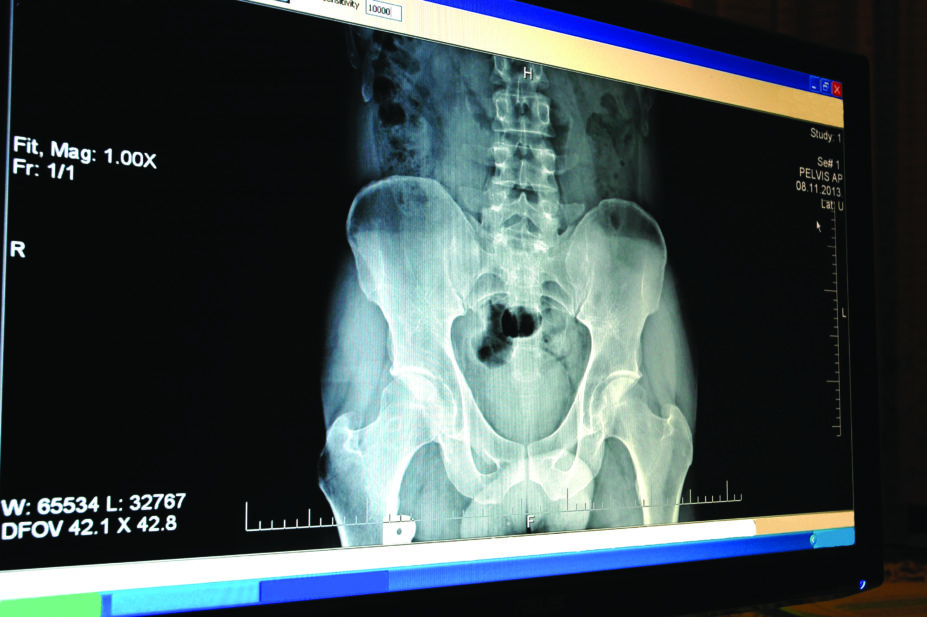
Shutterstock.com
Bisphosphonates, a class of bone-sparing drugs, may make bones more fragile in some patients with osteoporosis by increasing the risk of microcracks, a small study suggests.
Researchers at Imperial College, London, analysed bone samples from 16 older patients who had suffered a broken hip, half of whom had been taking a bisphosphonate.
High resolution x-rays of the samples, which had been taken during hip replacement operations, found that those from patients who were taking the drugs had a larger number of tiny cracks and also less mechanical strength, the researchers found.
While the researchers say that, as expected, the bone samples from patients taking the drugs had fewer holes, they also found 24% more microcracks in the bisphosphonate samples than in the samples from patients not taking the drugs, and 54% more microcracks than in healthy ageing bone.
Tests of mechanical stress also found that the bone from patients taking a bisphosphonate was 33% weaker than that from those who had had fractures but were not prescribed the treatment.
It is the first time that researchers have used synchrotron X-ray micro-CT technology in this way to assess microdamage in osteoporotic bones.
Reporting their findings in Scientific Reports
[1]
(online, 28 February 2017), the researchers say the statistically significant results between the two groups warrant further study.

Source: Courtesy Richard Abel
Study leader Richard Abel, lecturer in musculoskeletal sciences at Imperial College London, stressed that patients should not stop taking bisphosphonates if they have been prescribed them
Study leader Richard Abel, lecturer in musculoskeletal sciences at Imperial College London, stresses that patients should not stop taking bisphosphonates if they have been prescribed them, but that more work was needed to ascertain if there was an optimum length of time for taking the drugs.
“Although this is a very small, early-stage study, the results are quite startling, and justify follow-up studies,” he says.
“These microcracks are like the small cracks that emerge when you repeatedly flex a plastic ruler — they gradually weaken the structure and may potentially make it more prone to breaking.”
Bisphosphonates, which reduce the rate at which bone is broken down in the natural process of renewal, have been shown overall to reduce the risk of fracture by 30-50%, the researchers say.
But concerns have been raised that in some — albeit rare cases — bisphosphonates may lead to oversuppression of the renewal process, preventing breakdown to a degree that the resulting slow turnover of bone increases the chance of fracture.
“Long term we may need to develop other therapies that treat osteoporosis by building new bone rather than slowing the breakdown of old bone,” he says.
The team is not planning to investigate samples from patients with osteoporosis who have not had a fracture.
Sarah Leyland, a nurse consultant at UK Charity the National Osteoporosis Society, points out that the study is small and the research is at an early stage.
“There are some unanswered questions about exactly how long patients should be taking some treatments, but there is plenty of good evidence to show that these drugs are effective at reducing fractures,” she says.
“The study authors have emphasised that people should not be stopping their treatment based on the results of this study.”
References
[1] Ma S, Lin Goh E, Jin A et al. Long-term effects of bisphosphonate therapy: perforations, microcracks and mechanical properties. Sci Rep 7, 43399; 2017 doi: 10.1038/srep4339


